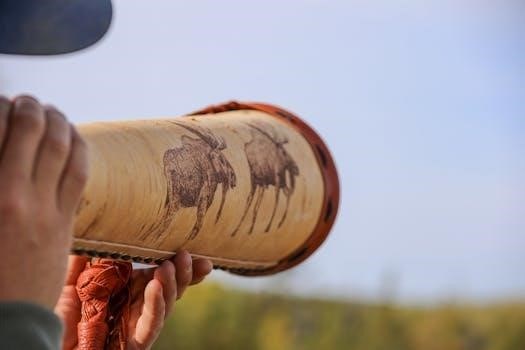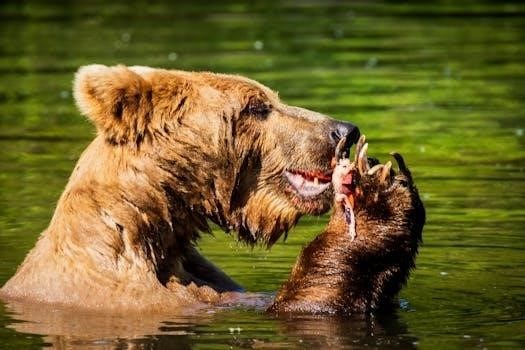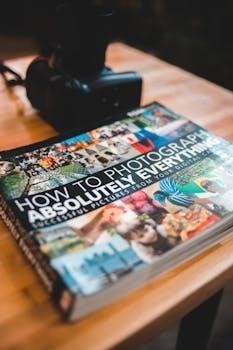
self guided moose hunt alaska
Self-Guided Moose Hunt Alaska⁚ An Overview
Self-guided moose hunts in Alaska are gaining popularity due to the rising costs of guided hunts. They offer experienced outdoorsmen the chance to tackle an epic Alaskan adventure independently. These hunts typically last around 12 days, focusing on harvesting Yukon Moose.
Cost Considerations for a Self-Guided Moose Hunt
Planning a self-guided moose hunt in Alaska involves several expenses. Expect to pay for round-trip flights, hunting licenses, and moose tags. Consider raft or camp rentals, food, and transportation. Budgeting is crucial, as hunt packages from transporters can range from $8,000 to $15,000 per hunter.
Round-Trip Flight Expenses
Round-trip flight expenses form a significant part of the overall cost of a self-guided moose hunt in Alaska. These costs can vary widely depending on several factors, including your departure location, the time of year you’re traveling, and how far in advance you book your tickets. Generally, hunters can expect to pay anywhere from $600 to $1,200 for a round-trip flight to Alaska.
However, this is just the initial flight to a major Alaskan city like Anchorage or Fairbanks. You will need to factor in additional costs for bush plane flights to reach remote hunting locations, as many prime moose hunting areas are inaccessible by road. These bush plane flights can add a substantial amount to your travel expenses, potentially costing several hundred to several thousand dollars.
Careful planning and booking flights well in advance can help minimize these costs. Consider flying during off-peak seasons or utilizing budget airlines to reduce the initial flight expenses. Researching and comparing prices from different bush plane operators is also essential to secure the most cost-effective transportation to your chosen hunting area.
Hunting License and Moose Tag Fees
Obtaining the necessary hunting license and moose tag is a crucial step in planning a self-guided moose hunt in Alaska, and these fees contribute to the overall cost of the expedition. Non-resident hunters are required to purchase an Alaska hunting license, which typically costs around $160. This license is a prerequisite for obtaining any hunting tags.
In addition to the hunting license, a moose tag is required to legally harvest a moose. The cost of a non-resident moose tag is approximately $800. It’s important to note that these fees are subject to change, so it’s always advisable to check the most current regulations and fee schedules on the Alaska Department of Fish and Game website.
Furthermore, some hunting areas may have specific drawing permit requirements or limited tag availability, which could affect the cost and feasibility of hunting in those regions. It’s essential to research the specific regulations for your chosen hunting unit and apply for any necessary permits well in advance of your hunt.
Failing to obtain the proper licenses and tags can result in significant fines and legal consequences, so meticulous attention to these details is paramount.

DIY Moose Hunting in Alaska
DIY moose hunting in Alaska presents a challenging yet rewarding experience for seasoned hunters seeking independence and self-reliance in the vast Alaskan wilderness. This approach demands meticulous planning, extensive knowledge of moose behavior, and a comprehensive understanding of Alaska’s hunting regulations. Hunters choosing the DIY route are responsible for all aspects of the hunt, from transportation and camp setup to navigating the terrain and processing the harvested game.
Successful DIY moose hunting requires thorough scouting, often involving aerial surveys or extensive on-the-ground reconnaissance to identify areas with high moose concentrations. Hunters must be prepared to endure harsh weather conditions, navigate challenging terrain, and handle potential encounters with wildlife, including bears.
Moreover, DIY hunters must possess advanced wilderness survival skills, including proficiency in navigation, first aid, and emergency communication. They must also be adept at butchering and preserving meat in the field to ensure the successful retrieval of their harvest. While demanding, a well-executed DIY moose hunt offers a unique sense of accomplishment and a deep connection with the Alaskan wilderness;
Regulations and Requirements
Alaska moose hunting regulations are crucial for a legal and ethical hunt. Non-residents don’t always need a guide, but must adhere to specific antler restrictions and hunting unit rules. Moose Hunter Orientation may be mandatory in certain areas.
Moose Hunter Orientation
The Moose Hunter Orientation is a crucial requirement for hunting in specific Alaskan game management units, such as Units 7 and 15. While mandatory for these areas, it is highly recommended for all moose hunters, regardless of their chosen hunting location. This orientation ensures hunters are well-informed about current regulations, ethical hunting practices, and moose conservation efforts, contributing to a sustainable and responsible hunting experience.
The orientation covers essential topics, including moose identification, legal harvest requirements, and proper field care of harvested animals. It emphasizes the importance of understanding antler restrictions, reporting requirements, and waste minimization. Additionally, the orientation promotes hunter safety and awareness of potential hazards in the Alaskan wilderness.
By completing the Moose Hunter Orientation, hunters demonstrate their commitment to responsible hunting and contribute to the long-term health of Alaska’s moose populations. It’s a valuable resource for both resident and non-resident hunters, ensuring they are well-prepared and informed before embarking on their moose hunting adventure. Always check the most current Alaska Department of Fish and Game regulations before your hunt.
Antler Restrictions
Alaska’s Department of Fish and Game enforces specific antler restrictions in various game management units to manage moose populations and ensure sustainable hunting practices. These regulations dictate the legal criteria for harvesting bull moose, focusing on antler size and configuration. Hunters must be thoroughly familiar with these rules before commencing their hunt.
Common antler restrictions include minimum antler spread requirements, often measured in inches, and limitations based on the number of brow tines present on each antler. For instance, some areas may only allow the harvest of bull moose with antlers at least 50 inches wide or those possessing a minimum of four brow tines on one side.
These restrictions are designed to protect younger bull moose, allowing them to mature and contribute to future breeding seasons. Hunters are responsible for accurately identifying legal bull moose before taking a shot, as violations can result in significant penalties.
Consulting the latest Alaska Hunting Regulations booklet is crucial for understanding the specific antler restrictions in your chosen hunting area. This ensures compliance with the law and promotes ethical and responsible moose hunting. Regulations may change annually, so staying updated is essential.

Fly-In Moose Hunts
Fly-in moose hunts in Alaska offer access to remote and pristine wilderness areas, significantly increasing the chances of encountering trophy-sized moose. These hunts involve utilizing bush planes to reach isolated locations inaccessible by road, providing a unique and immersive hunting experience.
Several outfitters specialize in fly-in moose hunts, offering both guided and self-guided options. Willow Air, for example, provides self-guided fly-in hunts in the Innoko Wildlife Refuge. These hunts often include transportation to and from the hunting location, along with essential gear like camping equipment and satellite phones.
Fly-in hunts cater to experienced hunters seeking solitude and a challenging adventure. Hunters typically set up base camps near rivers or lakes, utilizing boats for transportation and scouting. The remoteness of these locations minimizes hunting pressure, resulting in higher moose densities and larger antler sizes.
However, fly-in hunts require careful planning and preparation. Hunters must be self-sufficient and capable of handling emergencies in remote environments. Weather conditions can be unpredictable, potentially delaying flights and impacting hunting schedules. Thorough research, proper gear, and a strong understanding of wilderness survival are essential for a successful and safe fly-in moose hunt.

Success Rates in Alaska Moose Hunting
Moose hunting success rates in Alaska are influenced by various factors, including the specific hunting unit, hunter experience, weather conditions, and accessibility to remote areas. On average, around 10-20% of moose hunters in Alaska are successful. However, success rates can be significantly higher in regions known for their abundant moose populations and limited hunting pressure.
Guided hunts often boast higher success rates due to the expertise of experienced guides who possess in-depth knowledge of local moose behavior, migration patterns, and optimal hunting locations. Guides also provide valuable assistance with transportation, game retrieval, and regulatory compliance.
Self-guided hunters can achieve comparable success rates with meticulous planning, thorough research, and a strong understanding of moose hunting techniques. Scouting potential hunting areas, studying topographical maps, and utilizing GPS technology can significantly enhance their chances of success.
Weather conditions play a crucial role in moose hunting success. Favorable weather, such as clear skies and calm winds, can improve visibility and increase moose activity. Conversely, harsh weather, including heavy rain, snow, or strong winds, can make hunting more challenging and reduce moose movement.
Ultimately, success in Alaska moose hunting hinges on a combination of factors, including hunter skill, preparation, environmental conditions, and a bit of luck.

Gear and Camp Essentials
Embarking on a self-guided moose hunt in Alaska demands meticulous preparation and the right gear. Essential hunting equipment includes a high-powered rifle with appropriate ammunition, a quality spotting scope and binoculars for long-range observation, and a reliable rangefinder for accurate shot placement.
Camp essentials are equally crucial for survival and comfort in the Alaskan wilderness. A durable and weather-resistant tent is paramount, along with a warm sleeping bag rated for sub-freezing temperatures. A portable stove and cooking utensils are necessary for preparing meals, while a water filter or purification tablets ensure access to safe drinking water.
Navigation tools, such as a GPS device, compass, and topographical maps, are essential for navigating remote areas and avoiding getting lost. A satellite phone or personal locator beacon (PLB) provides a lifeline for emergency communication.
Other important items include a first-aid kit, insect repellent, sunscreen, and appropriate clothing for layering in varying weather conditions. Sturdy hiking boots are essential for traversing rugged terrain, while waterproof outerwear keeps hunters dry in wet conditions.
Don’t forget essential tools like a knife, axe, and saw for processing game and building shelter. A game cart or sled can be invaluable for transporting heavy loads of meat. Careful planning and packing of gear and camp essentials are vital for a safe and successful self-guided moose hunt in Alaska.


Leave a Reply
You must be logged in to post a comment.